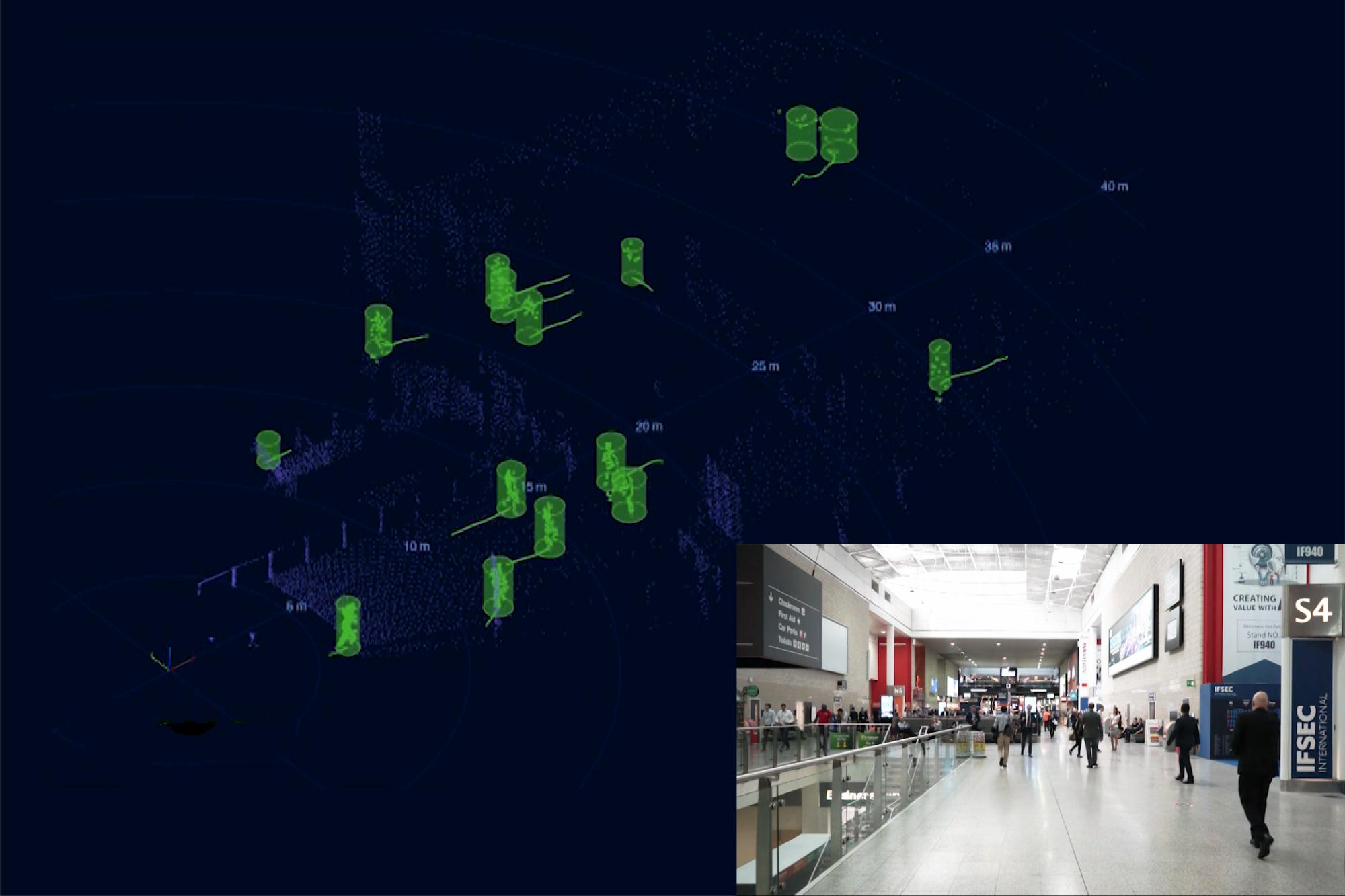7 Steps for Creating a Smart Building
FM provider Service Works Global has released a new white paper that details the seven steps for creating a smart building. The paper dispels the assumption...
Read Full Article
What is lidar technology? And how can the facilities management sector leverage it to achieve safe operations?
Dr Jun Pei, CEO and co-founder of Cepton Technologies Ltd is a leading technologist in optics and electronics. Before co-founding Cepton, he founded AEP Technology to develop advanced 3D optical instruments.
Earlier in his career, he led advanced engineering efforts at Velodyne to build lidars for driverless cars and worked in technology development at KLA-Tencor. Dr. Pei received his Ph.D. in Electrical Engineering from Stanford University.
In this opinion piece, Dr. Pei discusses the various ways lidar can help us build smarter, cleaner spaces as we gradually re-enter the workplace following lockdown.
“These smart lidar systems and applications can provide real-time data on how many people are sharing a space, to help facilities comply with occupancy regulations - a crucial prerequisite for businesses and establishments to reopen after the pandemic.”
– Dr Jun Pei
CEO, Cepton Technologies Ltd
Making facilities smarter has been an industry focus for many years. However, in the COVID-19 era, the level of intelligence required to efficiently and effectively manage facilities is exponentially higher as occupancy management, social distancing and heightened cleanliness take precedence. This is particularly the case when managing a building or location that’s frequented by large numbers of people.
Traditionally, there are, of course, a number of ways to gather information about where people are, how long they stay and how densely they cluster, but each has its pros and cons.
You can, for example, gather such information by deploying boots on the ground, but following people around is neither welcome nor particularly efficient. It can also be expensive and prone to error.

Picture: A photograph of Dr Jun Pei. Image Credit: Cepton
One could use cameras, but there are privacy protection concerns whenever you capture a person’s face on film. Additionally, there are obvious limitations on what you can do with a two-dimensional piece of video, where it’s difficult to accurately locate people in a space. If you want to use video, the lighting and data storage requirements are also significant.
Using technologies like Wi-Fi are also equally problematic for privacy reasons, not to mention the spotty adoption and the inaccuracy associated with the position of each person.
Alternatively, one could analyse data on visits to a particular location, say a vending machine, using transactions – but that only tells you something about the destination, not the direction of travel, nor any other meaningful information regarding how people are distributed across a facility at a given time.
This is where lidar comes in. If you haven’t heard of lidar before, you’re not alone, but you’ll likely be familiar with the concept. Lidar builds a picture of its surroundings in much the same way radar does, by sending out a signal and measuring how long it takes for that signal to bounce back. Unlike the radio frequency waves used by radar, lidar uses invisible infrared light, making it orders of magnitude more accurate.
When it receives a signal back, a lidar system builds a three-dimensional (3D) image known as a “point cloud”, with which one can identify all types of objects. In the case of autonomous vehicles, this could be anything from other vehicles to people to road hazards to signs and more. The point cloud requires a smaller amount of data in comparison to a high-pixel video camera, which in turn makes processing the data very quick indeed. That’s why lidar technology has become an integral part of many autonomous vehicle designs, where safety and accuracy are both critical.
In a facilities management setting, lidar’s potential is almost unlimited – and Cepton has developed world-leading expertise in this area, with smart software combined with cutting edge lidar sensors to give you a view of the world that allows anonymity but provides unprecedented 3D detail.
While you might position a lidar sensor in much the same way as you would a video camera, it has a much wider field of vision, and can be easily deployed in an interconnected network to ensure seamless tracking of objects across the whole facility, with no spaces left out. This data can then be used to build a full 3D image of any space and track people anonymously in real-time as they move within it.
These smart lidar systems and applications can provide real-time data on how many people are sharing a space, to help facilities comply with occupancy regulations - a crucial prerequisite for businesses and establishments to reopen after the pandemic. It can also accurately identify the paths people use to get from one place in the building to another, as well as the areas where people often congregate, including such details as the count of people, the spacing between each of them and more.

Picture: An image of a floorplan, with lidar technology showing data on building occupancy
From this, you can build rich analytics which can then be used to manage occupancy, create safe zones inside a facility, and manage cleaning and maintenance operations, thereby significantly reducing the resources required to achieve safe operation. Moreover, you can give ground teams easy access to this data in real-time. This level of efficiency can be tremendously beneficial for any FM team, reducing overheads and maximising productivity.
Unlike camera imaging which requires good lighting, lidar is capable of superior imaging outdoors and indoors, in bright sun, with blinding flashlights and in darkness. The technology has a fundamental role to play in effectively managing our spaces given the new normal we now live in due to the pandemic.
“Lidar doesn’t require any light to work and can be deployed in such a way as to identify suspicious activity and track possible intruders. It can alert a master security system if someone is behaving unusually on a building’s premises or exterior - or if someone is breaching the perimeter or a restricted zone. It operates at such detail that it could even tell if someone has left a package behind.”
– Dr Jun Pei
CEO, Cepton Technologies Ltd
In fact, there are also several other uses for lidar in an FM setting, the most obvious being security. Lidar doesn’t require any light to work and can be deployed in such a way as to identify suspicious activity and track possible intruders. It can alert a master security system if someone is behaving unusually on a building’s premises or exterior - or if someone is breaching the perimeter or a restricted zone. It operates at such detail that it could even tell if someone has left a package behind.
All of this information is gathered in anonymity and can be used by the security team to initiate camera recordings or alerts when breaches or suspicious activities occur. Another example of a lidar application would be to use occupancy information to manage energy and lighting usage in the building. Yet another example, in this case outside a building, would be to use lidars to enable intelligent and even automated parking.
We might not get back to normal for some time but being able to understand our environment in 3D-accurate detail, in real-time and while preserving anonymity, gives the FM sector a great opportunity to respond to the challenges of the pandemic era in the most effective way, making smart lidars a powerful tool in a world of contactless social distancing.
Picture: An image showing anonymized crowd perception using lidar technology. Image Credit: Cepton
Article written by Dr Jun Pei | Published 23 July 2020
FM provider Service Works Global has released a new white paper that details the seven steps for creating a smart building. The paper dispels the assumption...
Read Full ArticleInfogrid has received funding from Original Capital, SoftBank Vision Fund 2, JLL Spark and several others. The smart building technology company has raised $90 million...
Read Full ArticleAhead of the return of their IFM Tour, Infraspeak has laid out their predictions for 2023 smart technology trends for buildings. Watch the...
Read Full ArticleData-driven facilities management is now the expected norm, but security concerns about IoT systems still remain amongst FMs and tenants. The Internet of Things (IoT)...
Read Full ArticleThe operational technology that powers connected devices across building systems is providing more entry points for cyber criminals to exploit, says research and advisory...
Read Full ArticleShumon Choudhury, who has over 15 years of experience managing PRS & FM portfolios, writes about his experiences helping his clients to embrace smart...
Read Full Article800 Fulton Market, a gateway to one of Chicago’s fastest-growing neighbourhoods, has been completed. Watch the...
Read Full ArticleHow will the intersection of retrofits, smart homes and digitally transformed building maintenance help the UK to achieve net-zero emissions by 2050? Nik Flytzanis,...
Read Full ArticleArtificial intelligence is changing medical practice and the healthcare industry. Technologies including machine learning and digitised data acquisition are allowing...
Read Full ArticleAfter almost two years of stops and starts due to the pandemic, enduring resilience is defining the built environment – that’s according to Gensler’s...
Read Full Article